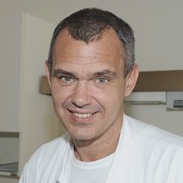Trends and Prospects in Electroporation-Based Treatment for Tumors
A special issue of International Journal of Molecular Sciences (ISSN 1422-0067). This special issue belongs to the section "Molecular Oncology".
Deadline for manuscript submissions: 20 June 2024 | Viewed by 3185
Special Issue Editors
2. Faculty of Health Sciences, University of Ljubljana, Zdravstvena pot 5, SI-1000 Ljubljana, Slovenia
Interests: tumor biology; electroporation-based treatments
Special Issues, Collections and Topics in MDPI journals
Interests: hepatopancreatobiliary and transplant surgery; oncology; electrochemotherapy
Special Issue Information
Dear Colleagues,
Electroporation-based treatments are a fast-developing field in oncology. Electrochemotherapy is an excellent example of this technology that has broad clinical applications in tumor treatment. Another new fast-developing field is gene electrotransfer for gene therapy or vaccination. This application is still in clinical trials, but has vast potential. To bring both approaches into broader clinical applications, more research on pre-clinical level is needed. In this respect, we invite researchers in the development and applications of electroporation-based treatments for cancer to submit good research or review papers in this Special Issue. Additionally, clinical papers with biomolecular experiments are welcomed.
Prof. Dr. Gregor Sersa
Prof. Dr. Blaž Trotovšek
Dr. Giulia Bertino
Guest Editors
Manuscript Submission Information
Manuscripts should be submitted online at www.mdpi.com by registering and logging in to this website. Once you are registered, click here to go to the submission form. Manuscripts can be submitted until the deadline. All submissions that pass pre-check are peer-reviewed. Accepted papers will be published continuously in the journal (as soon as accepted) and will be listed together on the special issue website. Research articles, review articles as well as short communications are invited. For planned papers, a title and short abstract (about 100 words) can be sent to the Editorial Office for announcement on this website.
Submitted manuscripts should not have been published previously, nor be under consideration for publication elsewhere (except conference proceedings papers). All manuscripts are thoroughly refereed through a single-blind peer-review process. A guide for authors and other relevant information for submission of manuscripts is available on the Instructions for Authors page. International Journal of Molecular Sciences is an international peer-reviewed open access semimonthly journal published by MDPI.
Please visit the Instructions for Authors page before submitting a manuscript. There is an Article Processing Charge (APC) for publication in this open access journal. For details about the APC please see here. Submitted papers should be well formatted and use good English. Authors may use MDPI's English editing service prior to publication or during author revisions.








